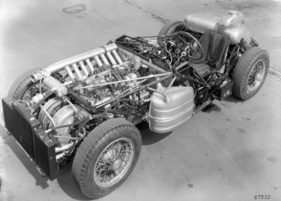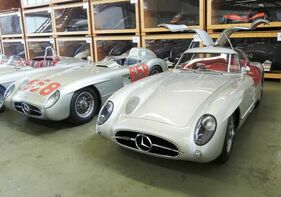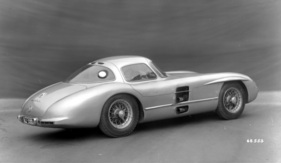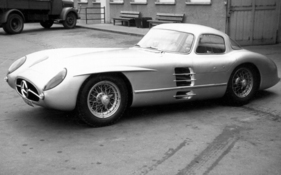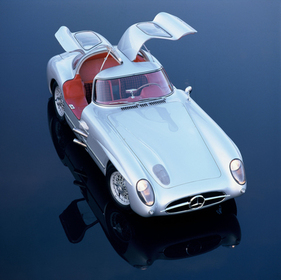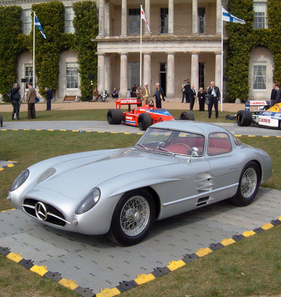Mercedes-Benz 300 SLR "Uhlenhaut-Coupé" - To mark the occasion
Summary
Perhaps the most desirable racing car in the world never even drove a single race. The drivers preferred a different body shape; the planned first outing was canceled after a catastrophe. The "Uhlenhaut Coupé" based on the Mercedes-Benz 300 SLR remained a test vehicle against its will for the rest of its life. This article tells the story of the eight-cylinder racing coupé, which remained unsold for 66 years until it passed into new hands for EUR 135 million.
This article contains the following chapters
- Continuing a success story
- From Formula 1 to Le Mans
- The armored big cat
- Open preferred
- A touch of the roof
- A different kind of endurance racing car
- Second coupé without a destination
- You should have been a journalist
- Clear division of roles
- Sale
Estimated reading time: 15min
Preview (beginning of the article)
Daimler-Benz returned to international racing in 1952 with only half throttle. The 300 SL of the first season was largely developed from series components in order to get a feel for the post-war racing scene at low cost. According to Fritz Nallinger, the company's technical director, the project was deliberately small-scale. Nevertheless, the first 300 SL turned out well enough to win the 24 Hours of Le Mans and the Carrera Panamericana in Mexico. When Daimler-Benz returned to serious racing in 1954, the company felt committed to its tradition. In the Grand Prix races from 1934 to 1939, Daimler-Benz cars enjoyed superior success and only had to fear competition in the form of the Auto-Union rear-engined cars. The racing heritage of Daimler and Benz was rich in victories dating back to the 19th century. When new Grand Prix rules came into force in 1954, allowing non-supercharged engines with a displacement of two and a half liters, the company, led by managing director Wilhelm Haspel, decided to get involved.
Continue reading this article for free?
Photos of this article







































































